
Cello Music Collections
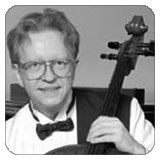
Nicholas Anderson (d. 2016) was acclaimed as an outstanding interpreter of the solo concert repertoire. His unique and inspired performances were received with the highest praise and enthusiasm by audiences and critics alike. Anderson began playing the cello at the age of eight, and made his first solo appearance on television the following year. In his early teens, Anderson studied in Pittsburgh with Theo Salzman, Principal Cellist of the Pittsburgh Symphony and Professor of Cello at Carnegie Mellon University. He spent his high school years as a resident student at the North Carolina School of the Arts. Anderson's cello playing thrived there under the mentorship of Irving Klein, cellist of the internationally renowned Claremont Quartet. It was during this time that he performed in the master classes of Janos Starker, and studied in the summer with the great "cellist's cellist" Leslie Parnas. Following this period, Anderson studied at Aspen with Claus Adam, cellist of the Juilliard Quartet, and at the age of nineteen, was invited to study at the Juilliard School. However, he became aware of the work of the master cello teacher Margaret Rowell in California and decided to turn down Juilliard and move to California to study with her in 1971. Nicholas Anderson debuted at the National Gallery of Art in Washington, D.C. After moving to New York, his numerous solo concert appearances included the 92nd St. Y Kaufmann Concert Hall, Mannes College of Music, American University, and Community Concerts/Columbia Artists. He has made a specialty of performing the cycle of Beethoven Cello Sonatas, as well as the complete Bach Solo Cello Suites. Anderson premiered many works, as a champion of creative musicality in modern compositions. In addition to serving on the cello faculty of Queens College, Anderson coalesced the teachings of Margaret Rowell into a dynamic series of classes called the "Breakthrough Cello Seminars," which he presented worldwide.
[ Collection in process ]

Lev Aronson (1912-1988) was an established performer and teacher of the violoncello and Jewish survivor of the German and Russian labor camps of World War II. Aronson began his cello studies under Julius Klengel, graduating from Berlin Hochschule fur Musik in 1932. During his time at the Berlin Conservatory, Aronson studied under Alfred von Glehn and Gregor Piatigorsky. Piatigorsky would continue to be Aronson's mentor and role model throughout his career.
After immigrating to the United States in 1948, Aronson settled in Texas, performing as principal cellist of the Dallas Symphony until 1967. He retired from the symphony due to health reasons and accepted a teaching position at Baylor University and later at Southern Methodist University.
Lev Aronson is best remembered for his contributions in teaching, inspiring generations of musicians with his knowledge of the cello and with his strength of personal character.
[ Digital Collection ]
[ Finding Aid ]
[ Search Cataloged Materials ]

Ennio Bolognini (b. 1893 - d. 1979) was an Argentine-born cellist, composer, conductor, pilot, and professional boxer. Referred by Pablo Casals as "The greatest cello talent I ever heard in my life," it is rumored that even Emmanuel Feuermann stated, "For my money, the world's greatest cellist is not Casals, Piatigorsky, or myself, but Bolognini!" Bolognini began studying cello performance with his father (Egidio Bolognini), completing his education with José García at the St. Celicia Conservatory in Buenos Aires. Bolognini moved to the States to serve as the sparring partner for boxer Luis Firpo to prepare Firpo for his match with Jack Dempsey. In addition to music and boxing, he was also an avid pilot, co-founding the Civil Air Patrol, the civilian auxiliary of the United State Air Force during World War II. Bolognini served as principal cellist of the Chicago Symphony Orchestra from 1929 to 1930, when a dispute made him quit the orchestra. After leaving, he enjoyed a successful career as a soloist in the nightclub scene, as well as performing in major music festivals such as Ravinia. In 1951, he moved to Las Vegas, performing in casino orchestras and founding the Las Vegas Philharmonic Orchestra in 1963. Within the course of his career, Bolognini composed seven pieces for cello.
[ Collection in process ]
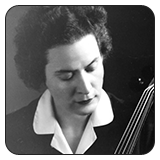
Elizabeth Cowling was born in Northfield, Minnesota. She attended Carleton College, where she received her B.A. degree in Philosophy and went on to Columbia University, where she received her M.A. degree in Economics. Her Master’s and Ph.D. in Music were earned at Northwestern University.
Dr. Cowling studied in Europe, starting in Paris in 1929, where she worked with Paul Bazelaire and studied with Mischa Schneider of the Budapest String Quartet. In 1950 she was a student of Pablo Casals for a brief period. She came to the Woman’s College (now UNCG) in 1945. At the Eastman School of Music in 1946 she began what was to become a long association with Luigi Silva. It was due to her efforts that UNCG acquired the Silva Cello Music Library and Silva’s papers in 1963. Dr. Cowling’s research into the literature and history of the cello led to the publication of her well-received work, The Cello, in 1975.
Dr. Cowling donated her music collection to Jackson Library in 1976 and 1977 and her collection of books in 1988. The standard cello repertoire is represented by more than 1000 publications and copies of manuscript music, including significant holdings of “teaching composers”. The collection also features a large number of copies of manuscripts of seventeenth to nineteenth century Italian composers, collected in preparation for her 1967 dissertation, “The Italian Sonata Literature for the Violoncello in the Baroque Era”.
[ Digital Collection ]
[ Finding Aid ]
[ Search Cataloged Materials ]
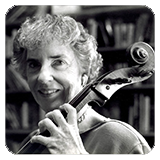
Marion Davies (1924-2012) is among the first women to secure the position of principal cellist in major orchestras in the United States. She received her music education initially at the San Francisco Conservatory of Music. She continued her education at the Curtis Institute of Music in Philadelphia, studying with Emmanuel Feuermann and Gregor Piatigorsky. Davies served as first cellist with the Kansas City Philharmonic, the Houston Symphony, and the Dallas Symphony Orchestra, where she remained from 1975-1987. Her teaching appointments include positions at Southern Methodist University and the North Carolina School of the Arts in Winston-Salem.
[ Collection in process ]
[ Finding Aid ]
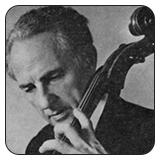
Born in Konigsberg of Polish parents, Eisenberg was brought to the United States by his family when he was two years old. After early training in Baltimore, he played in the Philadelphia Orchestra before becoming principal cellist of the New York Symphony at the age of 18. In 1921, Eisenberg had the opportunity to play for Pablo Casals, who was touring the U.S. This meeting proved to be a turning point in Eisenberg's life because, with Casals' encouragement, he went to Europe the following year to continue his advanced training. Although he studied with Julius Klengel, Hugo Becker, Nadia Boulanger, and Diran Alexanian, Casals was his most important mentor, and they became lifelong friends.
Eisenberg spent the years between 1926-1939 playing and teaching in Europe. He was well known for his interpretation of the Bach Suites, but his repertoire also included much twentieth century music. He was a member of the Menuhin Trio, and was the founder and artistic director of the London International Violoncello Center. Eisenberg held teaching positions at the Ecole Normale de Musique in Paris (where he succeeded Alexanian as professor of the Casals Class), the Longy School of Music in Cambridge, Massachusetts, and—during the last ten years of his life—the International Summer Courses in Cascais, Portugal. His book, Cello Playing of Today, first published in 1957, is now in its fifth edition. At the time of his death in 1972, Eisenberg was Professor of the Cello at the Juilliard School of Music.
A gift of his daughter, Maruta Eisenberg Friedler, Maurice Eisenberg’s collection of approximately 900 music scores and miscellaneous archival materials was acquired in 1989. It contains a predominance of twentieth century published music with a concentration of Eastern European composers. It also includes original manuscripts (such as Lennox Berkeley’s Concerto for “Violoncello and Orchestra”) as well as some collections of engraved music from the late eighteenth and early nineteenth centuries.
[ Digital Collection ]
[ Finding Aid ]
[ Search Cataloged Materials ]
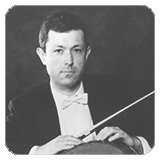
Lubomir Georgiev is remembered as an influential teacher of the cello and a talented performer. Georgiev received his training at the Bulgarian State Conservatory in Sofia in addition to studying under Janos Starker at the University of Indiana. He won several competitions in Europe, including the Carl Maria von Weber Competition in 1981 and the Valentino Bucchi Prize for his Double Bass Concerto composition.
In addition to performing as a soloist and in the string quartet, Musica Multiplici Mentes, Georgiev performed as the principal cellist of the Sofia Philharmonic Orchestra for nine years. After moving to the United States, Georgiev became principal cellist of the Sacramento Symphony Orchestra. In 1993, he joined the faculty of Florida State University as Associate Professor of Cello. In addition to his time teaching, Georgiev served as principal cellist of the Tallahassee Symphony Orchestra. In 1993, he joined the faculty of Florida State University as Associate Professor of Cello. In addition to his time teaching, Georgiev served as principal cellist of the Tallahassee Symphony Orchestra.
The Lubomir Georgiev Cello Music Collection is meticulously annotated and includes an impressive collection of music published in Moscow and Sofia. Additionally, it contains the most current releases of editions and arrangement of all the collections.
[ Collection in process ]
[ Finding Aid ]
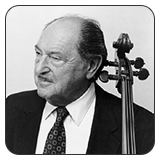
Bernard Greenhouse has won a reputation as one of the major interpreters of his instrument. He has appeared in recital and with orchestras and chamber ensembles in most of the major cities of Europe and America and has recorded for CRI, CBS, RCA, Philips, Concert Hall, and the American Recording Society. He was a cellist for the Bach Aria Group and a thirty-two year founding member of the Beaux Arts Trio, an ensemble widely recognized as the premiere trio of the twentieth century.
Greenhouse worked with many of the great masters of the cello, including Emanuel Feuermann, Diran Alexanian, and most notably, Pablo Casals, who wrote of him, “Bernard Greenhouse is not only a remarkable cellist, but what I esteem more, a dignified artist.” As a master teacher himself, he has served on the faculties of the Manhattan School of Music, the State University of New York at Stony Brook, The Juilliard School, the Indiana University summer school, Rutgers University and the New England Conservatory.
Greenhouse is the recipient of numerous awards, including Indiana University’s "Chevalier du Violoncelle" in 1980, Chamber Music America’s Richard J. Bogomolny National Service Award in 1988, and in 1996 (along with Mstislav Rostropovich) the RNCM Manchester International Cello Festival’s Award of Distinction.
The Greenhouse Collection features not only this master’s fingerings and bowings to the standard repertoire, but also his performance annotations from the piano trio, piano quartet and piano quintet repertoire made during his years with Beaux Arts. It also includes all of Mr. Greenhouse’s solo and chamber recordings, and archived tapes from his many years with the Bach Aria group, featuring such legendary singers as Marian Anderson, Jan Peerce, Eileen Farrell and Jenny Tourel.
[ Digital Collection ]
[ Finding Aid - Musical Scores ]
[ Finding Aid - Personal Papers ]
[ Search Cataloged Materials ]
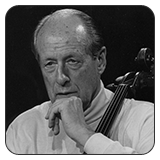
Fritz Magg was born in Vienna, Austria in 1914. At age twenty was chosen as solo cellist of the Vienna Symphony. His major teachers were Paul Grümmer and Diran Alexanian. After leaving Vienna in 1938 he joined the Chamber Orchestra of the New Friends of Music in New York as their principal cellist. Later he held the same position with the Metropolitan Opera Orchestra. In 1948 the Berkshire Quartet was invited to become the quartet in residence at Indiana University. There Magg remained to influence countless students over the next five decades as Cello Professor and Chair of the String Department. He also established himself as an international soloist through world-wide tours and recordings. From his retirement from Indiana in 1984 until his death in 1997, Magg continued concerting and produced a series of videotapes on his unique approach to teaching the cello, “Cello Sounds of Today.”
The Fritz Magg Collection was donated by his widow, Kari Miller Magg, in the fall of 2002. It contains some 475 items in 35 boxes. Most interesting among those are his transcription of the Caprice no. 15 by Nicolò Paganini and a unique cello method, “A varied routine of practicing the ‘Moto Perpetuo’ by N. Paganini,” a set of exercises arranged for cello. Magg, who devoted his lifetime to the study and teaching of Bach, left 32 editions of the unaccompanied cello suites, including a rare Alexanian edition. His particular performance annotations both in these Bach editions and in much of the standard repertoire are an invaluable part of this collection.
[ Digital Collection ]
[ Finding Aid ]
[ Search Cataloged Materials ]
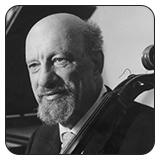
Rudolf Matz was born in Zagreb, Croatia. When he attended the Lycee Classique at the age of ten, his mother also enrolled him in preparatory classes at the Zagreb Academy of Music. Matz began his study of the cello with Umberto Fabbri and later studied with Juro Tkalcic, but the teacher who most influenced his development as a cellist and who was crucial to the evolution of his ideas on cello technique was violinist Vaclav Huml. In addition to receiving cello instruction at the Academy, Matz also studied conducting and composition. At the time of his death in 1988 he had written more than 300 instrumental and vocal compositions.
Rudolf Matz devoted his life to the promotion and development of musical activity in his native country, organizing musical societies and a variety of performing groups, including the Musical Society of Intellectuals, the Zagreb Chamber Orchestra (later I Solisti di Zagreb), Sklad, and the Zagreb Chamber Choir. He was also popular as a teacher of cello master classes and served as a jury member at the International Tchaikovsky Competition in 1966, 1970 and 1974. Matz was also a pioneer in establishing the field of music therapy as a profession in Croatia.
Acquired in 1986, the Matz Collection was a gift of Rudolf and Margita Matz. Boxes 1-35 of the collection contain music scores; included are nearly 200 original manuscripts and published editions of Matz’s own compositions, including First Years of the Violoncello, and a vast array of music by other Croatian composers. The archival and personal papers are largely written in Serbo-Croatian, although some material is in German and English. These materials offer a fascinating glimpse into the life of a man who was central to the development of the musical and cultural heritage of Croatia.
[ Digital Collection ]
[ Finding Aid ]
[ Search Cataloged Materials ]
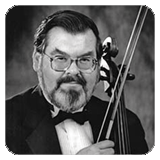
Douglas B. Moore, cellist, arranger, editor, and conductor, was born in Cedar Rapids, Iowa and studied cello at the University of Iowa with Hans Koelbel and Paul Olefsky. He served in the United States Army Band in Washington D.C. from 1967 to 1970. He was Professor of Music at Williams College from 1970 to 2007, and cellist for the Williams Chamber Players and the Williams Trio. His Bachelor of Music degree in cello is from Indiana University (1967), where he studied cello with Fritz Magg and chamber music with Janos Starker. His Master's and DMA degrees (1970 and 1977) are from The Catholic University of America in Washington D.C., where his teachers were Leopold Terapulsky and Robert Newkirk.
Moore has performed at the National Gallery of Art in Washington D.C., and at the Great Music West (Utah), Saratoga Baroque, Music Mountain, and New Port Music Festivals. He was an artist/faculty member at the Manchester (VT) Music Festival (1998-2008) and Kansas City Cello Clinic. He served as principal cellist with the Great Music West Festival Orchestra, the Albany (NY) Symphony, the Berkshire Symphony at Williams College, and the Lake George Opera Festival Orchestra. From 1991 to 1995, Moore was a member of the Saragtoga Chamber Players. Additionally, he conducted cello orchestras at cello congresses, cello camps and universities, and has taught master classes.
Moore's arrangements for multiple celli are published through his company, PlayMooreCello, and number over forty, including Sousa's Stars and Stripes Forever, and Rossini's Barber of Seville Overture. His works have been recorded by Yo-Yo Ma, the Saito Cello Ensemble of Japan, and the Boston Cello Quartet. Moore has also published nearly three dozen modern editions of late 18th century and early 19th century duos for violin and cello, most of which have never appeared since their first publication.
[ Collection in process ]
[ Finding Aid ]
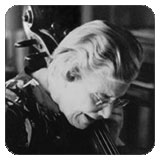
Margaret Avery Rowell (b.1900 - d. 1995) was among the most prominent cello pedagogues of the 20th century. In the 1920's and 30's, Rowell had an eminent performing career as the cellist in the Arion Trio, which broadcasted live on NBC radio six days every week. She graduated from UC Berkeley in 1923. In recovery from a prolonged illness in 1927, Rowell began an intensive journey to regain her physical skill of cello performance, and she was able to make conscious the mechanical processes taken for granted by "natural" musicians that she had previously done masterfully but unconsciously. This gave her an unprecedented access to the missing domain of cello-playing, which not only applied to her own work as an artist, but served as the basis for transmitting a breakthrough to generations of other cellists. As a result she came to be in tremendous demand as a teacher of the rarest value. During her 60-year career, she was known as "the dean of cello teachers in the San Francisco Bay Area," serving as distinguished Professor of Cello at the San Francisco Conservatory of Music, Stanford University, San Francisco State University, the University of California at Berkeley, and Mills College. Rowell founded the highly successful California Cello Club, which engaged masters such as Gregor Piatigorsky, Mstilav Rostropovich, Janos Starker, and Pablo Casals to speak to Bay Area cellists. The University of Indiana at Bloomington honored her with the title of Grande Dame du Violoncelle, and the American String Teacher Association presented her with their Distinguished Service Award.
[ Collection in process ]
[ Finding Aid ]
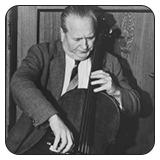
Born in Sopron, Hungary, János Scholz was a fifth-generation violoncellist in a musical family. He obtained his diploma from the Royal Hungarian Academy of Music in Budapest, where one of his teachers was Ernst von Dohnányi. After graduating from the Academy, he became first cellist of the Budapest Symphony Orchestra. In 1932, he joined the Roth Quartet, which toured widely. When the group arrived in the United States in 1933, the rise of Fascism in Europe led its members to obtain U.S. citizenship, and Scholz took up residence in Manhattan. He was also an accomplished viola da gamba performer and was the first to record the Bach Gamba Sonatas. In 1990, Scholz was the recipient of Indiana University’s “Chevalier du Violoncelle”.
The Scholz Collection was willed to Jackson Library and began to arrive in 1994. It was Scholz’s belief that the addition of his collection of over 700 scores to those of his friends and colleagues would greatly augment what has come to be known as one of the largest cello music repositories in the world. When asked about the disposition of his various priceless collections, Scholz said, “I don’t regret giving anything away. I never thought of these things as my own. I always considered that I had them in trust.”
[ Digital Collection ]
[ Finding Aid ]
[ Search Cataloged Materials ]
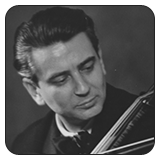
Born in Milan, Italy, Luigi Silva came from a musical family. In addition to taking cello lessons with Arturo Bonucci in Bologna, he also studied composition with Ottorino Respighi in Rome. Silva received a degree in cello from the Bologna Conservatory, and a master's degree in music pedagogy (cum laude) in 1921.
Silva performed throughout Europe during the 1920s and 1930s. He was cellist in the Rome Opera Orchestra, and won the Boccherini Prize at the First National Contest for young concert artists in Rome in 1933. He was a cellist in the Quartetto di Roma, and taught at the Cherubini Conservatory in Florence.
In 1939 Silva immigrated with his wife and father to the United States. From 1941 to 1949 he was head of the cello and chamber music departments at the Eastman School of Music. From 1949, he taught at the Juilliard School of Music, Mannes College of Music, and Yale University School of Music He was cellist of the Mannes-Gimpel-Silva Trio from its inception in 1950 to its dissolution in 1956.
The Luigi Silva Collection of approximately 1775 music scores, 13 boxes of archival materials, books and periodicals, was acquired by the Friends of the Library in 1963 and dedicated on April 5, 1964. In addition to his music publications, his copious notes on technique and the rough drafts of his projected history of the cello constitute a significant portion of the collection.
[ Digital Collection ]
[ Finding Aid ]
[ Search Cataloged Materials ]
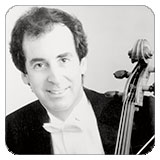
Paul Tobias (d. 2014) has been called a "master of the music and his instrument" by the New York Times, while the San Francisco Chronicle hailed him as "a fired-up, brilliant cellist in the great romantic tradition of Casals." He studied under Gregor Piatigorsky, Margaret Rowell and Bonnie Hampton, and under Leonard Rose, Zara Nelsova, and Claus Adam at The Juilliard School. The many awards bestowed on Tobias included a Walter W. Naumburg Foundation Prize and the Gregor Piatigorsky Award (presented by the Violoncello Society which proclaimed him "outstanding young American cellist"). Following his first performances with the New York Philharmonic under Pierre Boulez (broadcast over the CBS Television Network), he was given the honor of performing the American premiere of the Pederecki Cello Concerto at the Kennedy Center with the composer conducting the Polish National Radio Symphony. Particularly noteworthy, Paul Tobias championed uncommon and difficult cello works that he believed should be more widely heard. For example, Tobias was recognized as a pre-eminent interpreter of Samuel Barber's Cello Concerto and of the autograph version of Tchaikovsky's Variations on a Rococo Theme, which he edited for its premier publication by Edwin F. Kalmus. A former Lecturer in Music at Harvard University and pre-concert lecturer for the New York Philharmonic, Tobias also served on the faculties of the Manhattan School of Music, the New England Conservatory of Music, the San Francisco Conservatory of Music, and the University of California at Berkeley. A member of the faculty of the Mannes College for Music, New School University in New York, he was the recipient of its Distinguished University Teacher of the Year Award. Tobias authored numerous articles for American String Teacher, The Juilliard Journal, the Journal of the Conductors Guild, Strings, and The Strad.
[ Collection in process ]
[ Finding Aid ]
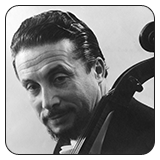
Laszlo Varga was born in Hungary in 1924 and was educated at the Franz Liszt Royal Academy of Music in Budapest, studying with Adolf Schiffer and Leó Weiner. During his long career he has appeared as a premier soloist with major orchestras throughout the world. For eleven years he was principal cellist with the New York Philharmonic, performing under both Dimitri Mitropoulos and Leonard Bernstein.
Varga also played with the Léner Quartet, the New York City Opera, the Canadian String Quartet and the Borodin Trio as well as founded the New York Philharmonic Cello Quartet in the 1950s, the first cello quartet in the United States. Over the years he has been a featured performer and respected teacher at the Aspen, Chautauqua and Shreveport music festivals, among many others. In addition, he has conducted major orchestras such as the Budapest Symphony and the San Leandro Symphony, and for twenty-five years served as both director and conductor of the San Francisco State University Symphony.
After teaching at the University of Toronto Conservatory of Music and San Francisco State University, Laszlo Varga was for a number of years on the music faculty at the University of Houston, receiving the University’s Outstanding Faculty Award in 2003. Among many other awards and recognitions, he was presented the distinguished title of “Chevalier du Violoncelle” by Eva Janzer Memorial Cello Center at Indiana University in 1991. Varga has recorded for major labels such as RCA, VOX, Columbia, Decca, Sony/Phillips and MusiCelli.
The original manuscripts to his over fifty transcriptions for cello ensemble and other combinations, including several unpublished works, are an important part of the Varga Collection. Among these manuscripts are his solo cello transcriptions of the Bach D minor and E major violin partitas, and cello/piano arrangements of the Schubert F minor Fantasy op. 103, and the Kodály Dances of Galánta (originally for orchestra). The collection also includes works written for the Varga Cello Quartet by Gunther Schuller, Robert Starer, and Meyer Kupferman, and other original cello quartets by Alain Kouznetzoff, Richard Heller and Arvo Paart.
[ Digital Collection ]
[ Finding Aid ]
[ Oral History Interview ]
[ Search Cataloged Materials ]
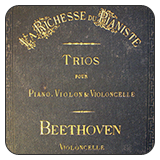
Special Collections also maintains a collection of musical scores and other publications which compliment the materials in the other Cello Music Collections.
[ Search Cataloged Materials ]